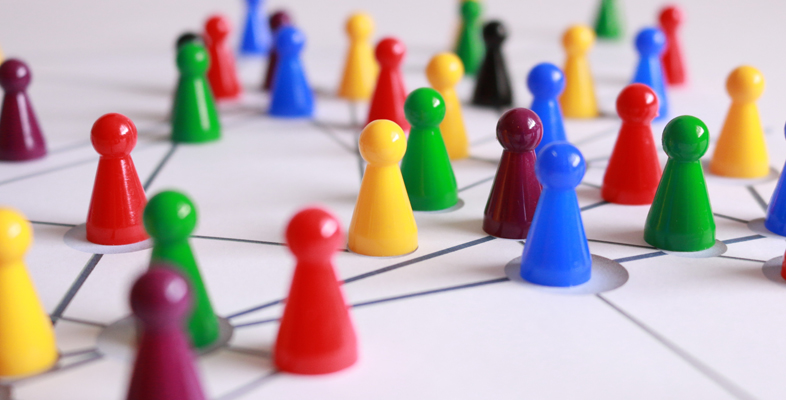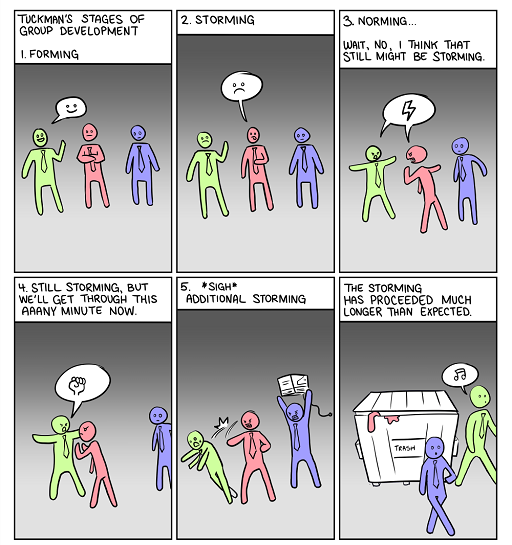3 Consequences of Tuckman’s model
There are a number of implications and consequences of Tuckman’s model which you need to recognise or be aware of:
- The duration and intensity of each stage can vary between teams. Some teams may have a very smooth and rapid passage through the first few stages while others may have a much more difficult time.
- Teams usually have to progress through the earlier stages in order to reach the performing stage. Therefore team members should try not to feel too demoralised if the team does not seem to be working very well at the beginning. It can help to see this as a stage that you have to go through in order to perform well in the future.
- It is possible for a team to return to a previous stage and progress through these stages may not be linear. This can particularly be the case if new members join the team, people leave the team or new and significant issues arise along the way.
- A team may not actually reach all the stages of development. This can be especially true if a team is together for only a very short time or if it gets stuck in one particular stage.
- While the Tuckman model suggests that each stage is discrete and easy to identify, the reality is that they may merge into each other or may be repeated as different issues emerge.
Why is it important to be able to identify which stage your team is at? If you can identify the stage and the kind of issues your team is facing, then you are better equipped to deal positively with some of the issues that arise. Simply being able to recognise and acknowledge the problems your group is having are normal can be reassuring. This information can also help you consider what the group may need to do in order for you to move onto the next stage.
Next you will look at each stage of Tuckman’s model individually and consider how you can recognise if your team is in this stage and the kind of activities and behaviours that can help your team get to a successful stage where your goal can be achieved.

